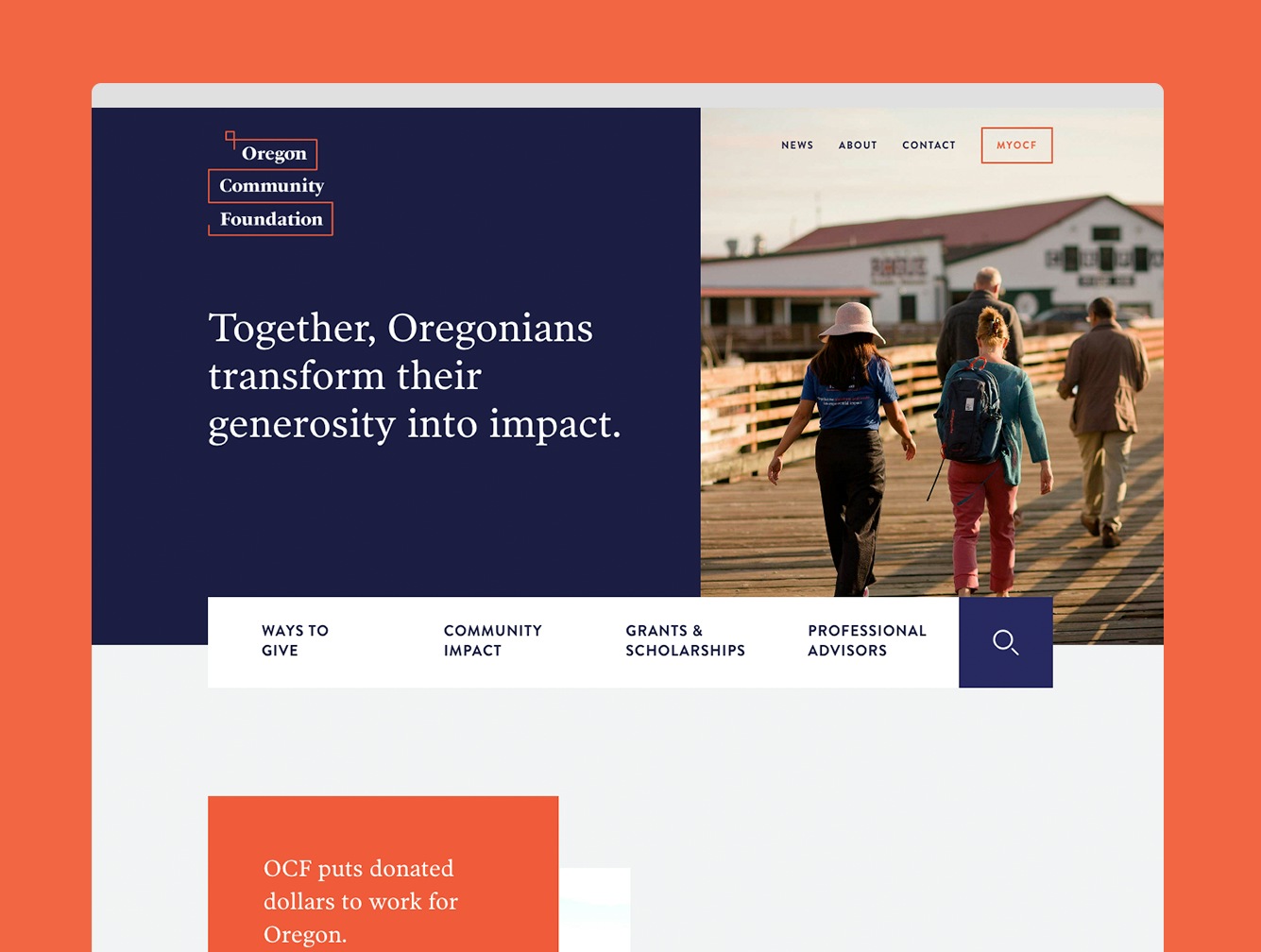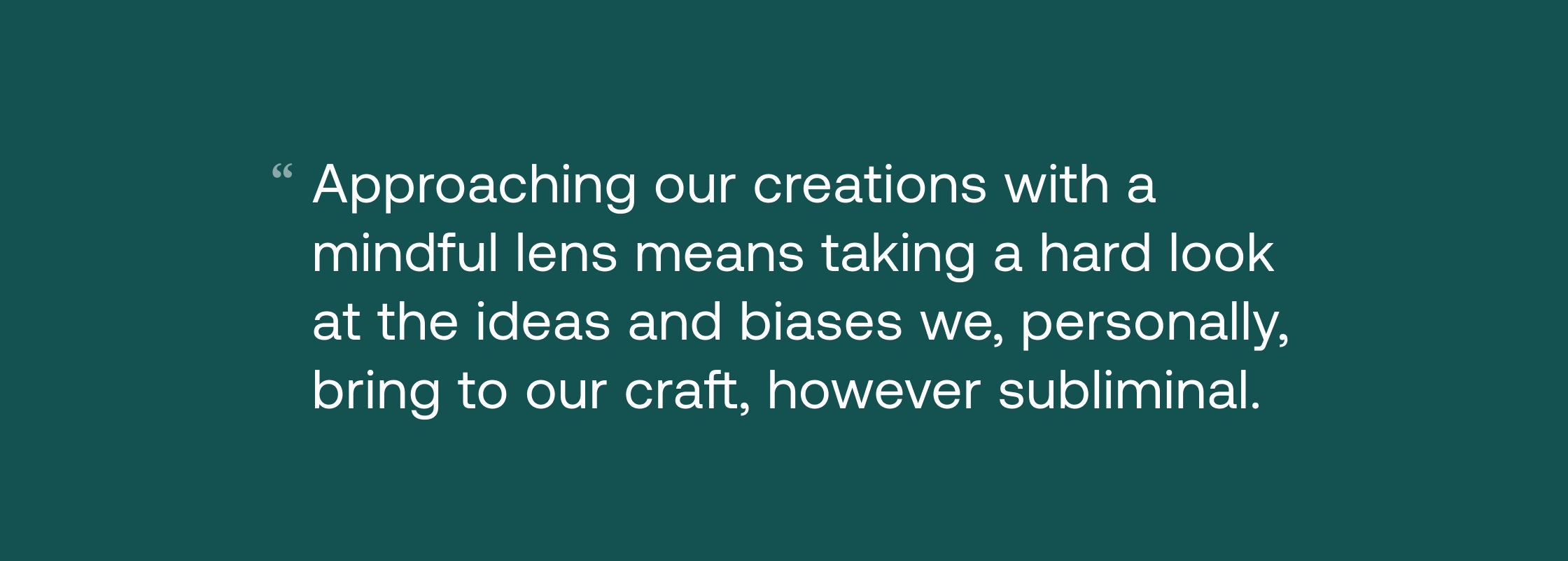By Talie Smith
January 10, 2020
This article first appeared in Visible, an organization for which Talie Smith was the Design Equity Advisor.
As a cultural and creative activity, design has a lot to answer for. Every choice we make as designers has ripple effects in society, both aesthetically and anthropologically. In essence, our job is to recontextualize, visualize, and emphasize stories, ideas, people, cultures, communities, and more through our work.
We can actually wield significant power. Approaching our creations with a mindful lens means taking a hard look at the ideas and biases we, personally, bring to our craft, however subliminal. We should not think of our work as neutral artifacts for visual pleasure or a pure dissemination of ideas; instead we should show respect for our communities by foreseeing the potential ramifications of our work — the good, the bad, and the iconic.
In order to design conscientiously, it’s absolutely essential for designers to be mindful and attentive to what drives our decisions and question what equity really means in this world, to ourselves, and in our work life.
So, how do we do that?
First, let’s talk about equity, which has become a towering idea that has shaken the foundation of our belief system. It’s important, then, that we’re accurate about how we use the term.
Equity is different from equality. Equality means that everyone gets the same tools. But equality doesn’t solve anything due to historical and enduring oppression and systemic biases. There continues to be significant, inherent inequality in our communities. Equity means seeing how our society and institutions are inherently biased. Having an equity lens in your life and work means working actively to make the systems themselves more inclusive and diverse.

The Power of Perception
Trabian Shorters of BMe Community wrote a fascinating article that breaks down how inequities happen. He says we all carry around narratives about groups of people and ideas that are conditioned by hearing them again and again (subtlety and explicitly) from people we trust. He calls the positive version of this asset-framing.
An example that I think about often is the story that women are highly emotional and can’t be trusted in high-level executive positions. This is a narrative that has been carried forward for many generations, usually subconsciously, perpetuating a culture of oppression. Of course this unduly strips women of their power — which, as for any good leader, stems from a combination of emotional awareness, hard skills, and talent. We see successful women in powerful positions, every day, succeeding.
The alternate story — that women-run businesses are more successful, statistically, than those run by men — is an emerging narrative (cited in Forbes in 2019, BCG in 2018, and True Wealth Ventures in 2015) that should eventually balance out the old one. Still, it’s one narrative, a simplification. Awareness of these stories we tell ourselves is the first step out of entrenchment; the beginning of a lifelong long walk toward a more mindful and inclusive belief system.
Asset-framing is, according to Shorters, “defining people by their aspirations and contributions before acknowledging their challenges and investing in them for their continued benefit to society.” Shorters has built this work on the shoulders of Nobel laureate psychologist Daniel Kahneman, whose research has shown that most of our mental processing happens automatically, and only a small portion of our lives are spent conscious of those concepts and framings.
I think we’re starting to see the complete degradation of this in tech. We’re seeing this in Facebook and Twitter and various social platforms…they start to fall apart from so many sides because when they were created, they weren’t created with the intent to create safer spaces. They were created for and by white, rich, cis, hetero men, and American men specifically, a lot of the time. I think that that’s why I feel so passionately about sharing the knowledge that I’ve gained in connecting the systems we build within design to the systems that were built outside of design.
Listen First
The best place to start is in how you approach the Discovery Phase of a design project. Who are you listening to? As you’re gathering requirements, who is at the table? Are you including just those with power in the situation, or are you advocating for those with less of a voice, historically? For example, if you are designing a nonprofit website, are you only speaking to donors, senior leadership, and board members? Budgets are tight, but it’s important to speak to the people who are affected by the work. The raw data that emerges from a Discovery Phase is the basis for all subsequent decisions.
Design equity starts with how you approach process — using listening as the foundational tool for good design — with your clients and their audiences.
Make Process Mindful
If we kick off a project in an equitable way, if we are good listeners and pause to think about the sources of what we hear, then we have a much better chance of seeing things through more of a prism than a singular lens.
That does make the process more complex, but as we move into concept and visual design, we’re working with much more accurate material. We’re able to serve our clients well and be more human-centered in our approach.
The key responsibility of the designer is to solve your client’s problems, but design equity suggests another huge opportunity (and responsibility): We can model this way of thinking. As an internal or external consultant, you can show your clients how to pause and be inclusive of multiple voices across the power dynamic. It’s not about having all the answers or trying to be the “equity expert” in the room. It’s about listening and asking questions to help people pause and consider what is on the table. It takes empathy, patience, courage, and mindfulness on our part to guide others along their (and our own) journey toward equity.
Lead with Vulnerability
By no means is this work easy or comfortable. I personally have had to get comfortable with feeling uncomfortable working with organizations in this way, challenging the status quo, on brand projects. It takes a willingness to be honest, open, and vulnerable. It means asking tough questions, admitting your own biases, and putting a strong emphasis on gathering many viewpoints. It can sometimes feel scary to advocate, but I always walk away grateful for the wisdom that we’ve surfaced. And the final product is always better as a result of this revealing process.
I believe that we, as designers, as communicators, have a responsibility to bring this consciousness into our work. It starts with a personal journey and introspection about our own internal biases and assumptions. Here are some resources to get you started:
Resources
Stanford’s d.school has developed an equity-centered design framework. They have put together a slide deck that’s useful.
Social impact firm Reboot has a good primer that focuses on the design research phase.
This article discusses urban planning, but it properly centers racial equity to show how understanding context can make a big difference.
